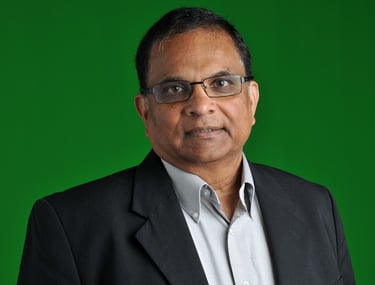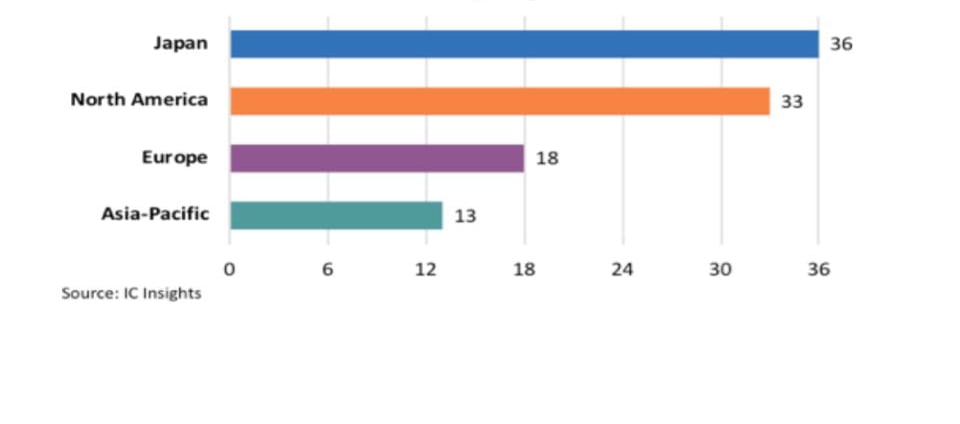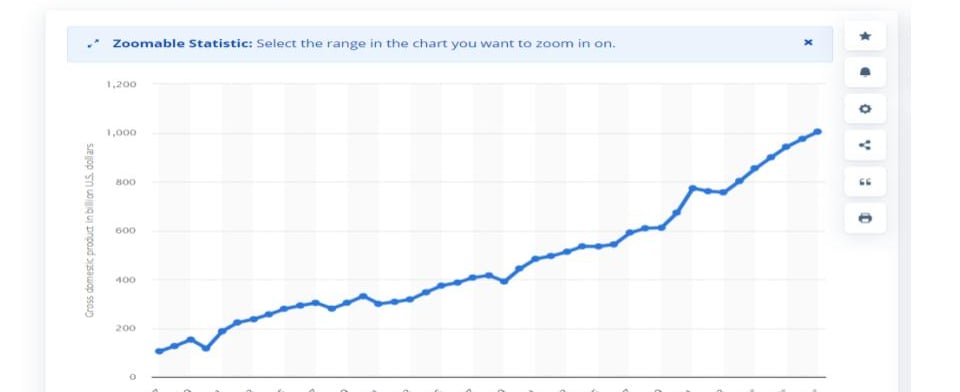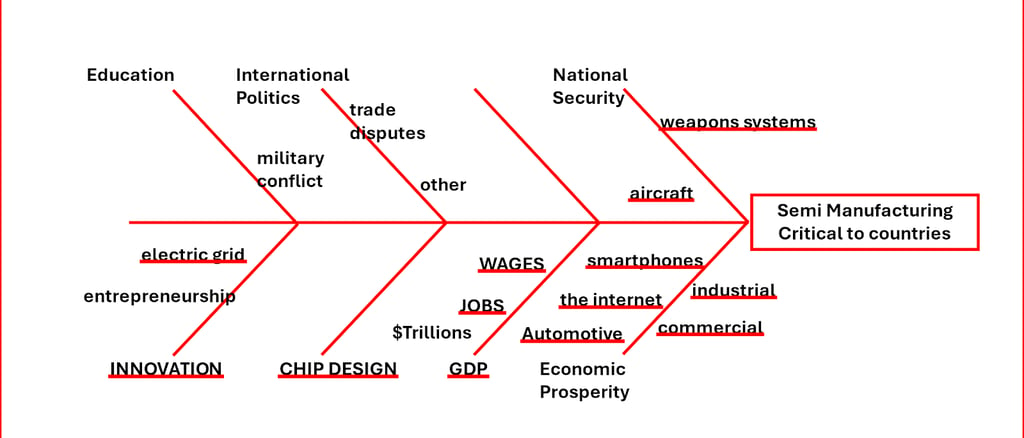Semiconductor Manufacturing Matters to Countries
How Semiconductors affect our lives . The past and the road ahead


Cyril-Patrick Fernandez Owner, Chief Technical Officer, Managing Director at Advanced Fab Technology, USA,
Semiconductor Manufacturing is critical to countries in this digital age.
Semiconductor chip manufacturing is a foundational building blocks of our modern lives. It is also at the forefront of National Security, Economic Prosperity and International Politics, giving rise to trade disputes, military conflict and other disruptions to countries. It enables nearly every modern industrial, commercial, and military systems, including smartphones, aircraft, weapons systems, the internet, and the electric grid. GDP, JOBS and wages
THE PROBEM: example: Although the US invented the silicon chip in 1959, in the last 50 years, the US share of global semiconductor manufacturing fell from 100% to 8%. Since Semiconductor Manufacturing moved away from the U.S, it affects the US GDP by > $1 Trillion. U.S. companies capture over 80% of world market in semiconductors but manufacture only 8% of the chips. Fabless: Design companies such as QUALCOMM, Broadcom, and AMD capture value by their designs. They outsource their manufacturing to lower-cost, higher-performance companies, primarily in Taiwan and Korea. In spite of the $52 Billion in US Government funds and $480 Billion in private funds, the US will marginally improve, or the situation will worsen as US companies will shut down fabs because of its inability to compete, thus affecting the US in a big way both in defense and in commerce. Taiwan, a tiny company, improved its economy by nearly $1Trillion in the 1970s, spearheaded by semiconductors. The value chain of semiconductors to electronics is 16X; hence, a $100B semiconductor industry will drive a $1.6 Trillion economy,
Today, Asia manufactures 77% of chips globally.
Shortages: The recent years chip shortages in the automobile industry and others illustrate the economic industries indicated the consequences of losing access to chips. Factories have been shuttered and workers have been furloughed or laid off as pandemic-influenced demand has far outstripped supply across the globe.
National Security: The US Defense Department has tried to buy computer chips from secure, domestic producers. But the 2-5nm leading edge companies are in Taiwan and Korea.
Why has the US fallen behind?
COMPLEXITY OF MANUFACTURING CHIPS
Silicon chips are the most engineered product in the world, the most complex manufacturing process known to mankind, and one of the most complex supply chains the world has ever seen. It is not like making potato chips or toothbrushes, contrary to the view of many politicians and Wall Street executives 30 years ago (real quotes) that making silicon chips is like making potato chips.
Additionally, to provide the highest value, it has been the leading innovation engine for the last 40 years by producing smaller, faster, and cheaper chips consistently. Annual worldwide semiconductor sales are around $500 Billion driving the larger market by > $5 Trillion in consumer products, software/IT, automotive, aerospace, financial industry, equipment manufacture, medical industry, etc.
RESCUE
How do countries achieve mastery in silicon chip manufacturing. By making lower-cost, higher-performance chips and delivering them on time. Lower costs are driven by
Construction time difference from 19 months (Taiwan) to 38 months (USA): $2 Billion
Time to High Yield: 1 year (Taiwan) to 5 years (USA): $4 Billion (28 nm, 50,000 wafers per month)
Chip (Device) Performance (Drive current, leakage) ASP difference from $3000/wafer to $1500 per wafer, or $1 Billon per year.
This difference is $3 Billion per year, with companies taking 5-12 years to catch up, leaving $5 to $12 Billion on the table of shutting down or changing CEOs.


An example of innovation that comes with manufacturing skill is that today, the world’s top two leading technology company’s (using science and engineering to make products) are in the Far East, manufacturing 7nm parts for smart phones and big data processing systems and are quickly moving to 5nm semiconductor manufacturing technology Production and research are ramping in these countries, with new equipment expenditures and job hiring the highest in Taiwan and Korea....


Contact us
Joseph Guy Fernandez


